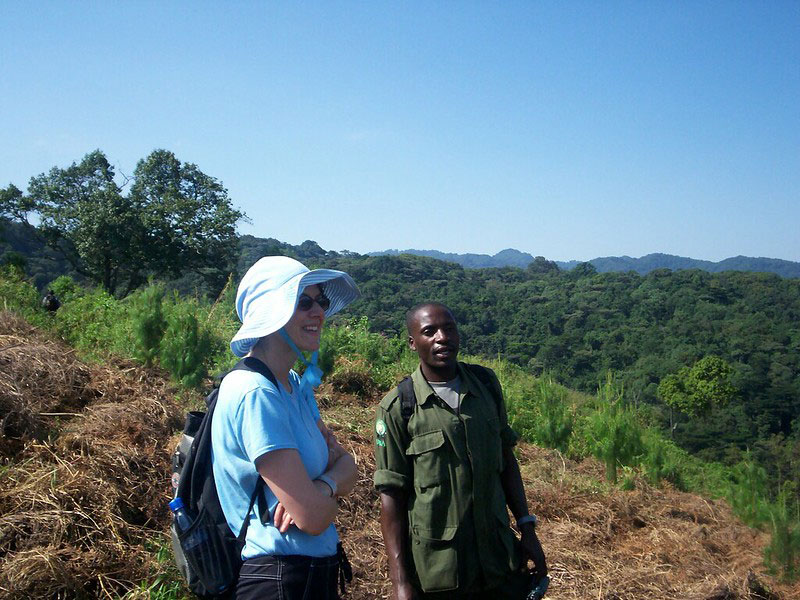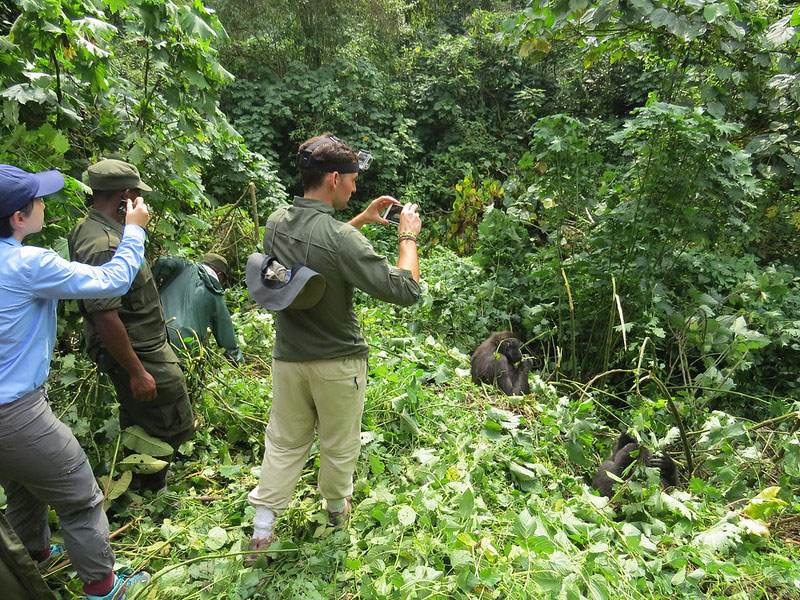THE ULTIMATE GORILLA EXPERIENCE
Bwindi Impenetrable Forest National Park is one of the world’s most remarkable wildlife encounters, is tracking mountain gorillas across the misty slopes of the remote Bwindi Impenetrable forest of south-western Uganda. These magnificent apes are both rare and endangered; their total population numbers less than 800 animals divided between the forests of Bwindi Impenetrable and the nearby Virunga volcanoes. With fifteen groups habituated for tourism, the Impenetrable Forest is the world’s primary mountain gorilla tracking destination.
Due to its great age – some 25,000 years – and an altitudinal range spanning 1400m 1, 160m, Bwindi’s forests contain an exceptional variety of flora and fauna. Species counts list 310 butterflies, 88 moths, 200 trees, 51 reptiles and 120 types of mammal. The latter includes several primates, among them chimpanzees, blue monkeys, L’Hoest’s monkey, and the mountain gorilla. Birdlife is also exceptionally rich with 357 species including 23 Albertine Rift endemics such as the short-tailed warbler, Shelley’s crimson wing, African green broadbill and the blue-headed sunbird, and seven IUCN Red Data List species. In order to safeguard this remarkable biodiversity, the 321km2Bwindi forest was gazette as a national park in 1991 and declared a UNESCO Natural World Heritage site in 1994.


ACTIVITIES AND ATTRACTIONS IN BWINDI
Mountain Gorilla Tracking
The highlight of a visit to Bwindi is a magical hour in the company of a family of mountain gorillas. Tracking the gorillas can last from a few hours to a whole day, depending on how far the group has moved since it was observed nesting up the previous evening. Bwindi has fifteen habituated gorilla groups that are tracked from trailheads at Buhoma in northwest Bwindi, Ruhija, Nkuringo and Rushaga. Contact time with the gorillas is restricted to one hour and participants must be aged 15 or over.
Birding
Bwindi’s four trailheads all offer excellent birding opportunities with the prospect of checking off forest rarities. The River IviTrail between Buhoma and Nkuringo is recommended, as is Buhoma’s forest-edge Munyanga River Trail. Ruhija’s Bamboo Trail, leading to the 2607m Rwamunyoni peak, and Mubwindi Swamp Trail are renowned for Albertine Rift endemics including the localized green broadbill.
Nature Walks
Though gorilla tracking is the main attraction, other walks provide more relaxed opportunities to explore one of Uganda’s loveliest rainforests. Forest trails lead to scenic waterfalls and ascend to viewpoints for breathtaking views of Bwindi forest, the Albertine Rift valley and the Virunga volcanoes.
Community Walks
Community walks through forest edge villages provide insights into the lives of the local Batwa (Pygmy) and Bakiga peoples.
ACCESS TO THE PARK
ROADS
The main trailhead at Buhoma is about 460kms from Kampala and can be reached by road from several directions. The main safari circuit approaches from the north through the Ishasha sector of Queen Elizabeth National Park (QENP), providing a chance to search for the famous tree-climbing lions. BINP is 160kms from Mweya in central QENP and 62kms from Ishasha. The most direct route from Kampala follows a surfaced road to Rukungiri via Ntungamo. A slow dirt road thenwindsthrough the highlands to Buhoma via Kihihi and Butogota.Ruhija trailhead is best accessed from the Kampala-Kisoro road, turning nort from the surfaced highway 18km beyond Kabale town. The southerly Rushaga and Nkuringo trailheads can be reached using dirt roads leading west from Muko, midway on the surfaced Kabale-Kisoro road, and north from Kisoro town. Note: a 4×4 vehicle is recommended for a Bwindi visit.
AIR
Travellers can fly from Entebbe International Airport or Kampala’s Kajjansi airfield to Kisoro (for Nkuringo, Rushaga and Ruhija) and to Savanna and Ishasha airstrips (for Buhoma). Prior transport arrangements for transfer to the park are required.
